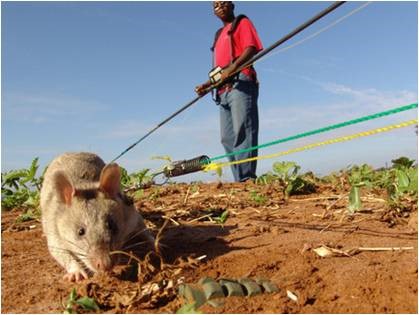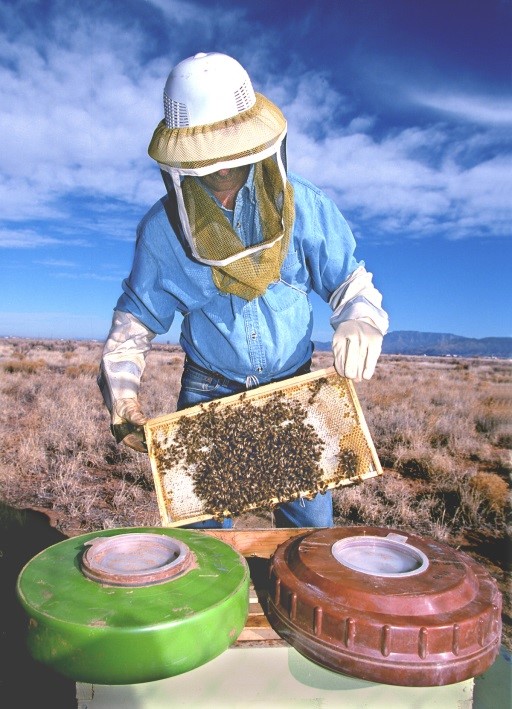Hello everyone and welcome to the first edition of FastTimes’s infrastructure and geotechnical geophysics news for 2021. I have the feeling it’s going to be an exciting 12 months for near surface geophysics and I’m very much looking forward to meeting with friends and colleagues in person again, certainly in the summer for me. As a write this article during the Easter break, I’m reminded that every year the 4th April is designated as the United Nation’s international mine awareness day (https://www.un.org/en/observances/mine-awareness-day). It has been nearly 25 years since the launch of The UN’s “Convention on the Prohibition of the Use, Stockpiling, Production and Transfer of Anti-Personnel Mines and on Their Destruction”, with 164 countries having either ratified or acceded to the convention since 1997. The timing of this edition on FastTimes could not be better and I have been reflecting on UXO research within our community over the past quarter of century. As an early-career researcher in 1997, developing numerical models of GPR wave propagation, some of my first ‘real-world’ applications were related UXO and humanitarian land-mine detection. Fast-forward to 2021 and the issues facing mine clearance teams in 1997 are just as relevant now, despite significant advances in remote sensing and geophysical technologies. Is it a simple case that were are not developing the right technologies or, arguably, unless military funded, are we more inclined to seek other sectors for our technological innovations (possibly true?). Alternatively, are we too traditional (or risk adverse?) as a community and less willing to be truly experimental and innovative when it comes to developing new multi-disciplinary sensing? I raise this discussion point, in part, as I reflect on recent news stores on the use of bees and drones for UXO detection from academics in Croatia
https://www.technologytimes.pk/2021/03/30/how-bees-and-drones-team-up-to-find-explosives/
Based on a paper released last month in Remote Sensing by Vladan Stojnić (Universiy of Banja Luka) and colleaguesfrom the the University of Zagreb titles “A Method for Detection of Small Moving Objects in UAV Videos” (https://www.mdpi.com/2072-4292/13/4/653), it provides a fascinating, and highly adaptable, approach to a difficult data analysis problem (spotting small, subtle, time varying changes in video images) using convolutional neural networks (CNNs). The article is very much worth reading and what impresses me is the way that the team has developed the Neural Network training technique to achieve a remarkable degree of detection success. Neural Networks are the ‘engine room’ for the majority of Artificial Intelligence & Machine Learning (AI/ML) approaches currently being applied to geophysical data, the success of which is very much dependent on the quality of the applied training regime. This was clear to see from AI and ML talks at recent EAGE and SEG conferences; put simply, the better the training algorithm the better the outcome. It is interesting to note that using bees to detect TNT signatures from landmines is not new. Along with rats and other animals, insects as novel biological “sensing technologies” have been used for decades to solve, in very practical ways, the problem of landmine clearance. The Croatian team’s research goes back to early 2000 which parallels similar US research conducted in 1999 the by the Sandia National Laboratories and the University of Montana (https://www.sandia.gov/media/minebees.htm). It is prudent to reflect on a comment made by the lead researcher in 1999… “using a handheld radar tracking device, they will chart where those bees go to determine whether they tend to forage near the locations of known landmines”. Twenty-two years later, we are only just developing the technical and data analysis capability to achieve this goal to any degree of success – an interesting and thought provoking reflection on the drivers for technology advancement.


My reflective ramblings have a point… March saw the release of the 2021 US Infrastructure Report Card 2021 from the American Society of Civil Engineers (ASCE) https://infrastructurereportcard.org/. It will take a while to digest the information fully but the headline figures are looking, well… better-ish. The national score has improved from a from a D in 2017 to C- now. This is still a relatively low score and as ASCE’s Executive Director, Tom Smith, put it to CNN “It’s certainly not a grade that you’d be proud of”.

Wastewater, highways, transit, ports and bridges are all rated in the Ds with only rail scoring the highest mark of B or “good to excellent condition”. In addition, the estimated decadal funding needed to improve US Infrastructure to a high quality state has increased from $2.1 trillion (estimated in 2017) to over $2.6 trillion now. However, the positive view is that this the first time that overall grade had been higher than D range since the survey began in 1998 and, in part, the report has prompted the new administration to launch the $2 trillion infrastructure plan as route to economic recovery under the so-called ‘American Jobs Plan’. How this will funded (tax increases?) spent (what sector gets what?) and delivered across the individual states (who gets what?) is going to be very intriguing. I remember making similar comments about the previous administration’s infrastructure plans following the 2017 report card. That does seems a very long time ago and little happened but the sense of difference appears to be in the shift from hydrocarbon based Energy delivery to more renewable, sustainable sources. There will be an evolution of national infrastructure spending and personally, I think it is exciting time to be part of the infrastructure-based geophysical sector. We have an opportunity to embrace new approaches to data analysis and sensing technologies, as the mine clearance community have done, and although it will take time, we have the opportunity to shape this future.
So… in a prompt to the next edition of FastTimes, “NDT and US Infrastructure”, we welcome articles, commentaries and opinion pieces on the state of US infrastructure and the methods, techniques and approaches we need develop. Please do send us your articles (to [email protected] or the chief editor, German Ojeda, [email protected]) and I hope, together, we can make the NDT and US Infrastructure edition one to remember.
Thank you and look forward to the next edition,
Nigel Cassidy




